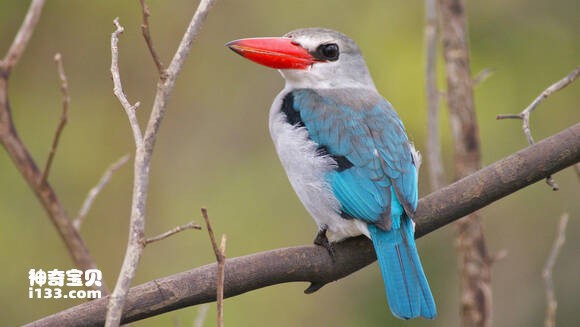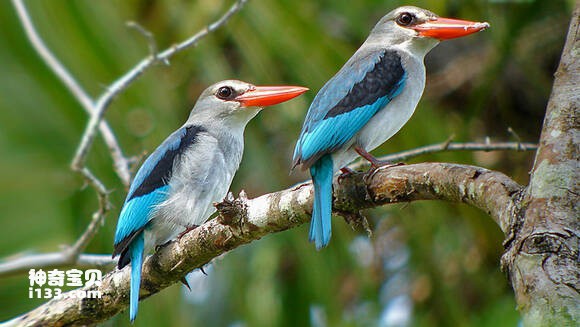Halcyon senegaloides
IUCN
LCBasic Information
Scientific classification
- name:Halcyon senegaloides
- Scientific Name:Halcyon senegaloides,Mangrove Kingfisher
- Outline:Climbing birds
- Family:
Vital signs
- length:About 22 cm
- Weight:57-66g
- lifetime:No textual research information is available
Feature
Distribution and Habitat
The red forest emerald is distributed in central and southern Africa (including the southern part of the Arabian Peninsula and the entire African continent south of the Sahara Desert (Tropic of Cancer).
Red forest emerald is not found only in mangroves. They are found near trees and in open woodland areas along rivers, often in estuarine woodlands and mangroves. Near wooded coasts, fields, bushes, evergreen forests, urban gardens, gardens and farms. It ranges from plain to 300 m above sea level.
Appearance
Honglin jade is 22cm long and weighs 57-66g. The forehead, neck, crown and nape are grayish brown. There is a slightly curved white line from the nostril to the eye. Eyes first black, cheeks and sides of neck grayish brown. The belly and sides are off-white, without a trace of impurities. The main feathers are black. The tip of the shoulder blade and the ends of the secondary feathers are blue, and the rest are mixed with black, gray and white. Red mouth, dark brown iris. Legs grayish brown. Young birds are slightly darker blue than adults. The abdomen and sides are yellow. The mouth is dark brown.
The mouth is thick and long like a chisel, the base is wider, the mouth peak is straight, the peak ridge is round, there is no nasal groove on both sides; Wing circle, the first primary feather is equal or slightly shorter than the seventh primary feather, and the second, third, and fourth are nearly equal in length; Primary feather base with white spots; The tail is round.
Details
Halcyon senegaloides, also known as Mangrove Kingfisher, is a bird of the genus Halcyon.

Mangrove emerald is a migratory bird. In late September and early October each year, they leave the woods and coastal mangroves to nest five or ten miles inland from the sea. In February and March, birds make exactly the opposite journey and return to the shore in search of mates.
The Red Forest emerald, like most forest game kingfishers, is entirely carnivorous. Often searching for prey in leaves or dirt. The main diet is invertebrates such as crickets, spiders, scorpions, and snails. It also eats small vertebrates such as small fish, small snakes and lizards.

The spawning season varies with latitude: October in Kenya, December in Tanzania and Pemba Island, November to December in Cape Province, August to January in East Africa and September to April in South Africa. The nest is built on the earth cliff or on the embankment of the river, and the nest is dug in the tunnel type cave with the mouth, which is 60 cm deep, 20 cm wide, 10 cm high and long. These caves are generally bare of bedding. The eggs are laid directly on the nest ground. Some also drill holes in tree trunks for nests. Eggs are nearly round, pure white.
Listed on the International Union for Conservation of Nature (IUCN) Red List Protection Level: Not Threatened (LC).
Protect wild animals and eliminate wild meat.
Maintaining ecological balance is everyone's responsibility!








